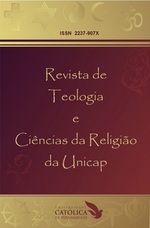LEARNING ABOUT EDUCATION WITH MADHYAMAKA PHILOSOPHY
DOI:
https://doi.org/10.25247/paralellus.2021.v12n30.p369-382Keywords:
Education, Teaching-learning process, BuddhismAbstract
What is learning? What is the purpose of education? How to teach? Can we find any answers or indications to these questions in writings from a mystical tradition like Buddhism? The initial idea of the present study was to seek answers to these questions in a book about the Madhyamaka Philosophical School, which is a 2nd-century Indian philosophy originating from the old Nalanda University. The principal aim of the study was to analyze the uses and associations of the words “teach” and “learn” and relate to the current ways in which we understand teaching and learning. For data analysis, Bardin Content Analysis was used. The categories presented refer to the three initial questions. From the analysis, was possible to enter this context and observe the possibility of the academy to establish dialogues and discuss current societies' issues and their practices in the light of old knowledge.
Downloads
References
BARDIN, L. Análise de conteúdo. Lisboa: Edições 70 Ltda, 1977.
BECKER, F. Modelos Pedagógicos e Modelos Epistemológicos. Porto Alegre. Paixão de Aprender, n. 5, p. 18-23, 1993.
BRASIL. LDB – Lei de Diretrizes e Bases da Educação Nacional. Lei 9394/96 BRASIL.
CUNHA, Olívia Maria Gomes da. Tempo imperfeito: uma etnografia do arquivo. Mana, v. 10, n. 2, p. 287-322, 2004.
DALAI LAMA. O caminho do meio: Fé baseada na razão. São Paulo: Global Editora e Distribuidora Ltda, 2015.
FREIRE, Paulo. Educação “bancária” e educação libertadora. Introdução à psicologia escolar, v. 3, p. 61-78, 1997.
GARFIELD, Jay L. Dependent Arising and the Emptiness of Emptiness: Why Did Nāgārjuna Start with Causation? Philosophy East and West, v. 44, n. 2, p. 219-250, abril 1994.
GONÇALVES, Ricardo Mário. As flores do dharma desabrocham sob o Cruzeiro do Sul: aspectos dos vários" budismos" no Brasil. Revista USP, n. 67, p. 198-207, 2005.
GOUVEIA, Ana Paula. Introdução à filosofia budista. Pia Sociedade de São Paulo-Editora Paulus, 2016.
JAMES, Simon P. Madhyamaka, Metaphysical Realism and the Possibility of an Ancestral World. Philosophy East and West, v. 68, n. 4, p. 1116-1133, 2018.
KALUPAHANA, David. Nagarjuna: The Philosophy of the Middle Way. Albany: State University of New York, 1986.
KHYENTSE RINPOCHE, D. J. Introduction to the middle way: Chandrakirti’s Madhyamakavatara. Seattle: Khyentse Foundation, 2003.
MASUZAWA, Tomoko. The invention of world religions: Or, how European universalism was preserved in the language of pluralism. Chicago: University of Chicago Press, 2005.
MONTOYA, Adrian O. Dongo. Piaget: imagem mental e construção do conhecimento. Unesp, 2010.
RANGEL, Yolanda Padilla. Educación Contemplativa en la Universidad Naropa,¿ una propuesta pedagógica revolucionaria?. Caleidoscopio-Revista Semestral de Ciencias Sociales y Humanidades, n. 40, p. 253-278, 2019.
USARSKI, Frank. O dharma verde-amarelo mal-sucedido: um esboço da acanhada situação do Budismo. Estudos Avançados, v. 18, n. 52, p. 303-320, 2004.
Downloads
Published
Issue
Section
License
Copyright (c) 2021 Luciana Fernandes Marques

This work is licensed under a Creative Commons Attribution 4.0 International License.
A submissão de originais para a Paralellus implica a transferência, pelos autores, dos direitos de publicação eletrônica. Os direitos autorais para os artigos veiculados neste periódico são do autor; todavia, são da revista os direitos sobre a primeira publicação. Os autores somente poderão fazer uso dos mesmos resultados em outras publicações se indicarem, claramente, que a Paralellus foi o meio originalmente utilizado. Em decorrência do fato de ser a Paralellus uma revista de acesso público, é permitida a utilização gratuita dos artigos em aplicações educacionais e/ou científicas não comerciais, desde que respeitando-se a exigência de citação da fonte (Texto atualizado em 16-11-2020).

















